At age 17, Ovidio Cartagena started his art career with The Lord of the Rings by creating a bad fan calendar. As he told me, everything about it was off: The days for the months were mislabeled and so was each weekday. His peers were supportive, but even the art looked off. Cartagena’s warm chuckle filled an empty conference room as he recalled those early stumbles. “I’m not gonna say it was great, because it wasn’t.”
More than a few career changes and decades later, he’s now responsible for one of the largest crossovers in tabletop gaming history, and Lord of the Rings is once again at the center of that project. As senior art director at Wizards of the Coast, he was tapped to bring one of the most popular fantasy franchises to one of the world’s most popular card games: Magic: The Gathering. In the recent past, many other big series have come to Magic through its budding Universes Beyond initiative, but not at this level of detail. This time around, Cartagena and his team are going all in, and The Lord of the Rings: Tales of Middle-earth is coming to Magic as a full product line with hundreds of new cards and all original art this June.
Polygon spoke with Cartagena recently in an exclusive interview at MagicCon in Minneapolis. In addition to the incredible art, which you can view below, we chatted about how art is made, approaching one of the world’s most iconic fantasy franchises, and how values of diversity informed his hopes for the upcoming set.
Approaching Lord of the Rings with fresh eyes
Cartagena told Polygon his team of artists started very purposefully from scratch and weren’t inspired by any specific film, adaptation, or previous illustrations. Instead, they worked directly with the source material — Tolkien’s original texts — and used them to draft unique concept art. Already a fan of The Lord of the Rings, Cartagena said he spent around a full year studying the original books closely, hoping to become an expert. He filled up a bookshelf with tomes, concordances, and maps in order to craft a world that felt true to both Tolkien’s texts and the multi-planar world of Magic. “You have to become a scholar for a while, just like you’re doing a thesis,” he said. But, at the end of the year, that work was just beginning.
Every generation has its own adaptation of Tolkien’s novels, from Ralph Bakshi’s 1978 animated film to Peter Jackson’s beloved Lord of the Rings trilogy to the more recent Amazon show The Lord of the Rings: The Rings of Power. On one hand, these visualizations gave Cartagena and the team a place to start working from — other sets in Magic have little or no basic lore, so at least the team wasn’t starting from zero. On the other hand, it presented a unique challenge: How does one grow the conversation around Middle-earth without being influenced by such iconic existing media?
“It would have been easy to say, We’re just gonna plaster Magic on top of this. And it’s easy to say, We’re just gonna evoke everything that’s been done before. But the approach we had was, We will try to learn this world. We will try to learn Lord of the Rings, try to learn the text, and see where it goes from there. Many of us have directed our own graphics as we read.
“It’s easy to assume that you understand Lord of the Rings, when in actuality you are remembering other artists’ depictions. Those are two different things. So getting the assumptions out of the way, and getting to the core of what this means, what this book means, was a process in itself. And that’s part of what we were doing as we were developing the world.”
Bringing a set like this to life is a balancing act, Cartagena said. He had to break down his own preconceived ideas about The Lord of the Rings and juggle the varying ideas of each artist. At the same time, he and the team had to create a cohesive world that still felt true to the multiverses of Magic.
For example, at one point in the process, an artist asked why there weren’t more floating buildings and objects in Tales of Middle-earth since many worlds in Magic have floating buildings and objects. Cartagena said, “Because that’s not the way the Númenóreans built, and that’s not the way the elves built. And that’s not the way Gondorians built. We have to stay true to the core values and the core message here.”
Layer on the logistics of work and the fact that Cartagena and the team had to bear the weight that came with making a new Lord of the Rings product, and it became a hard needle to thread. Polygon asked how he and the team managed it all and what their process looked like.
“I […] had to purge a lot of the imagery from my own mind that I had seen before,” he said “Not because it’s worthless. It’s very important. But because I wanted us to grow it. I wanted to grow Lord of the Rings, like a tree, you know, like, the Shire after the Scouring. Sam plants a seed, and the whole Shire just grows. That’s what I wanted to do.”
He told Polygon that by the time he brought the concept artists on board, only one had a very clear idea of Lord of the Rings that didn’t have the “garbling and the noise from all the other media.” The rest of the team had a lot of work to do to open “their minds to new ways of interpreting the material.” To get the team where they needed to be, he likened Lord of the Rings to another massive cultural work.
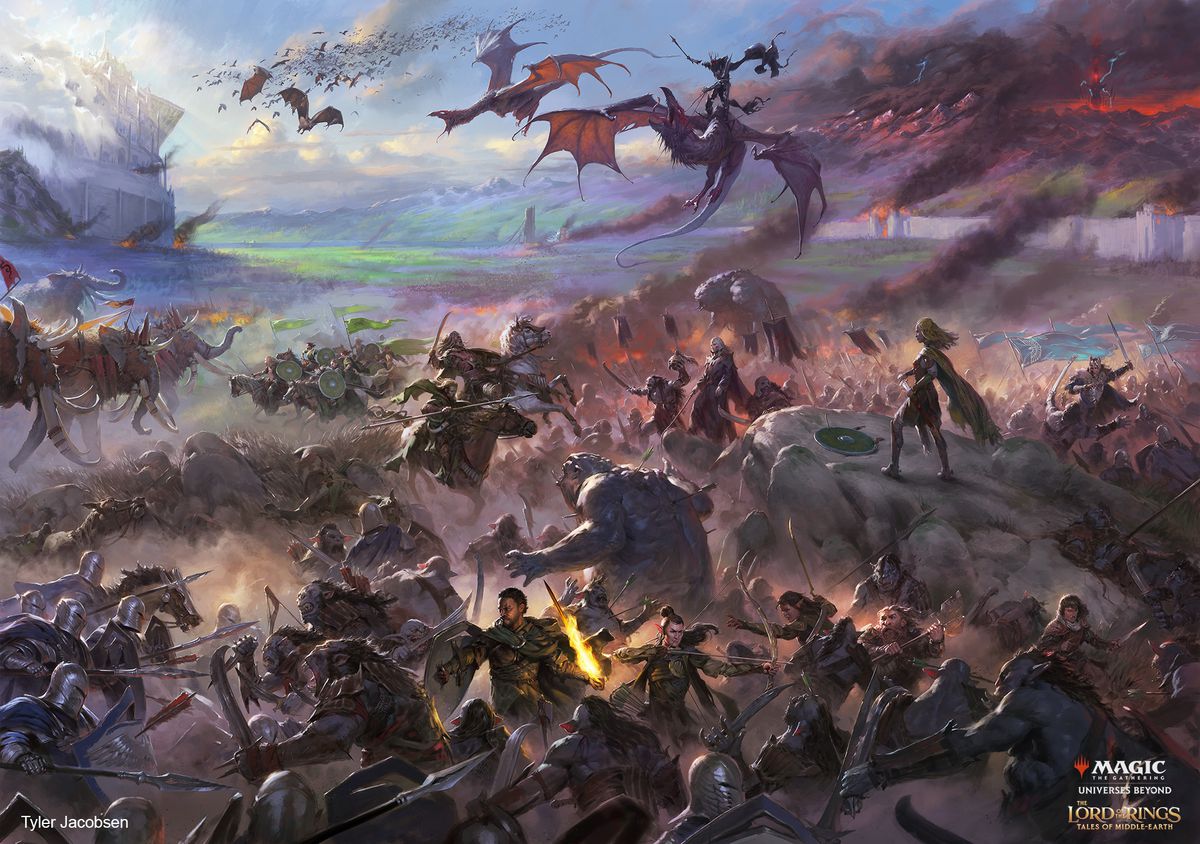
“The Lord of the Rings is like the Odyssey, like the War of Troy,” he said. “There are several characters and several key moments. But there are now, and there will continue to be, people who add to it because the work is that massive and that important. We’re just very lucky we were born close to when the [The Lord of the Rings] was written. But the centuries will tell us where this goes. And we are merely a part of that conversation, hopefully a lasting one.
“Approaching it from that point of view released a little pressure from us. And especially from me, because I was thinking, like, Oh my god, I’m responsible for many decisions here. For diversity, how Gondor looks, or how the elves look. I’m responsible because in the end, I’m gonna say, ‘This is what I want. Yeah, this is how you should do it.’
“Instead of focusing on the pressure, I focused on the love I have for the source material. And the awe-inspiring moments that I think [are important to] many fans, of which I am only one, and the moments that really told us a lot about bravery, humanity, courage, resourcefulness, and loyalty. Those values are very at the core of what I was doing. And on the opposite end, whatever the orcs are doing.”
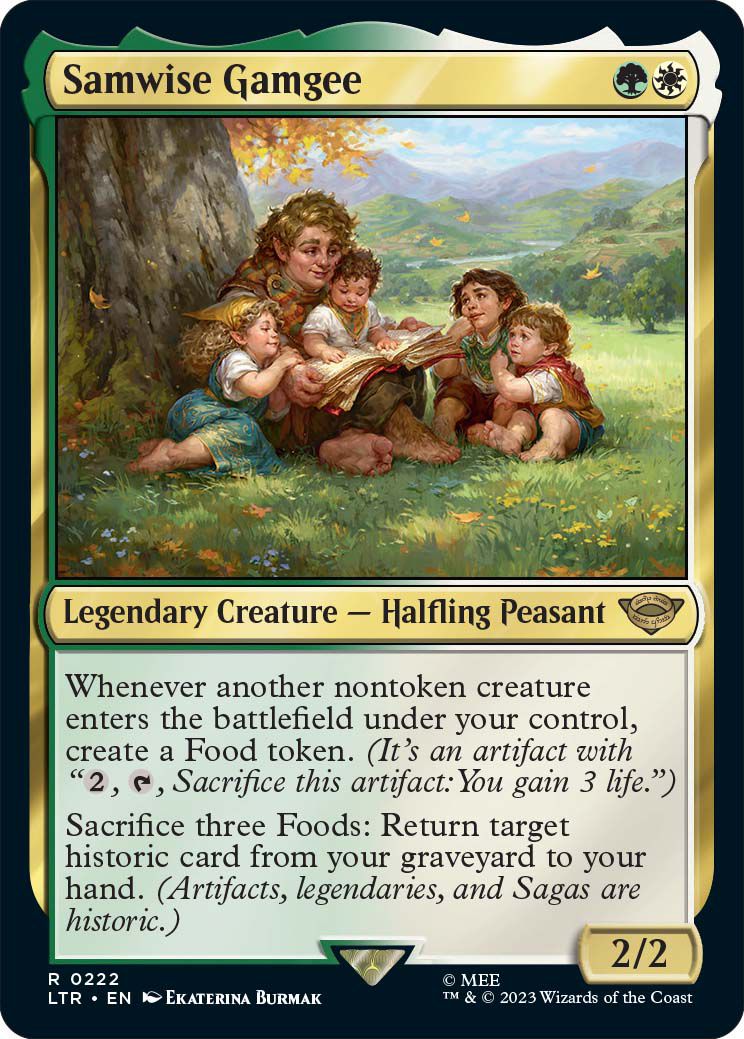
What resulted was a depiction of Middle-earth that was notably warm, and more diverse than past expressions. Cartagena told Polygon that the team wanted the hobbits to have a sense of “homeliness and warmth for people who know how to live life.” Cartagena wanted to see how broadly the team could expand that general feeling and communicate it through art. What he and artist Gray Highsmith arrived at was embracing a variety of folk cultures. The final art would come to include elements from Bolivia, like ponchos, as well as garb from Balkan peoples that were introduced initially in Ekaterina Burmak original concept art made for this project.
Characters of color in Magic: The Gathering: Tales of Middle-earth
Tales of Middle-earth enters the world at a cultural moment where big conversations are happening about how fantasy characters are represented in the media we consume. For years, fans and scholars have brought attention to interpretations of Tolkien’s texts that could make space for more canonical characters of color in The Lord of the Rings. Then, in the fall of 2022, Amazon Prime Video took a first step, releasing The Lord of Rings: The Rings of Power with a cast of actors of color playing dwarves and elves. And while the show expanded the franchise beyond its lily-white origins from the modern cinematic trilogy, it sparked racist blowback from fans.
Now, Cartagena’s work will continue that conversation, and he wanted diversity as a value to be front and center. For instance, the set introduces Aragorn, one of the core heroes and a member of the Fellowship of the Ring, as a Black character.

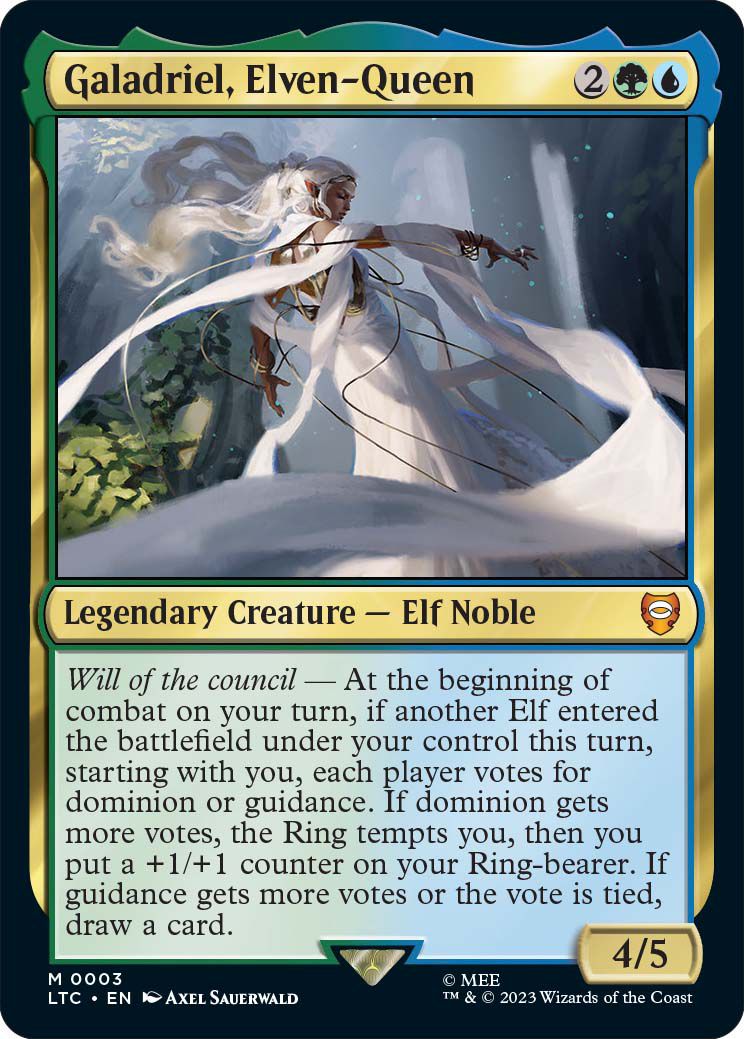
Image: Wizards of the Coast
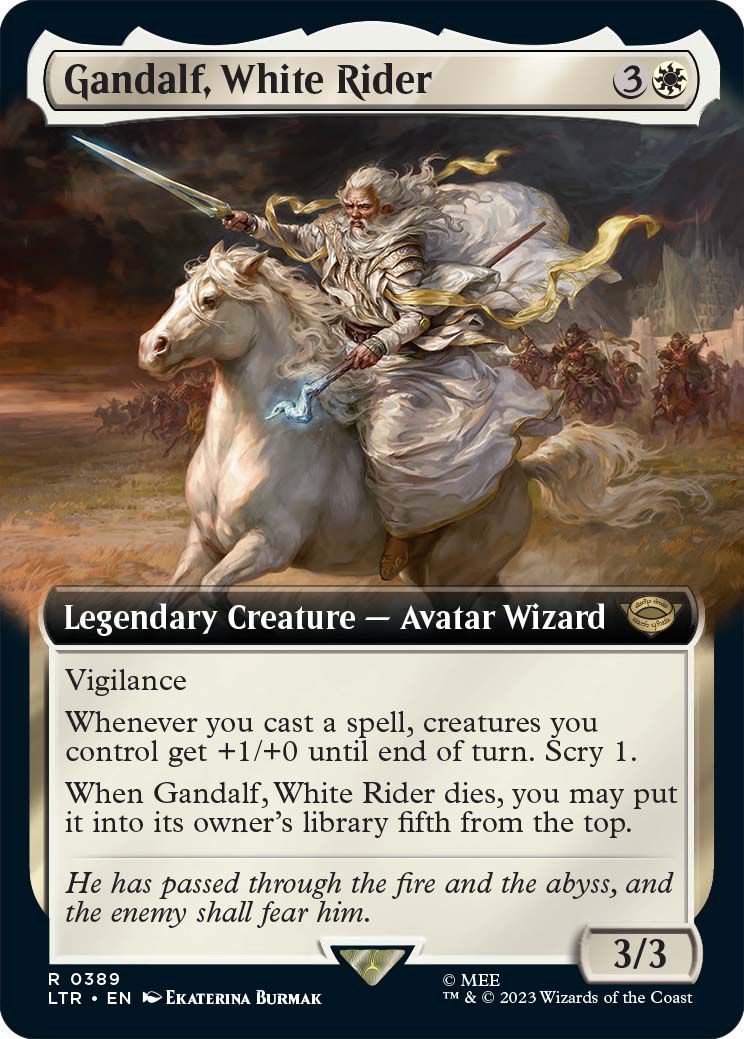
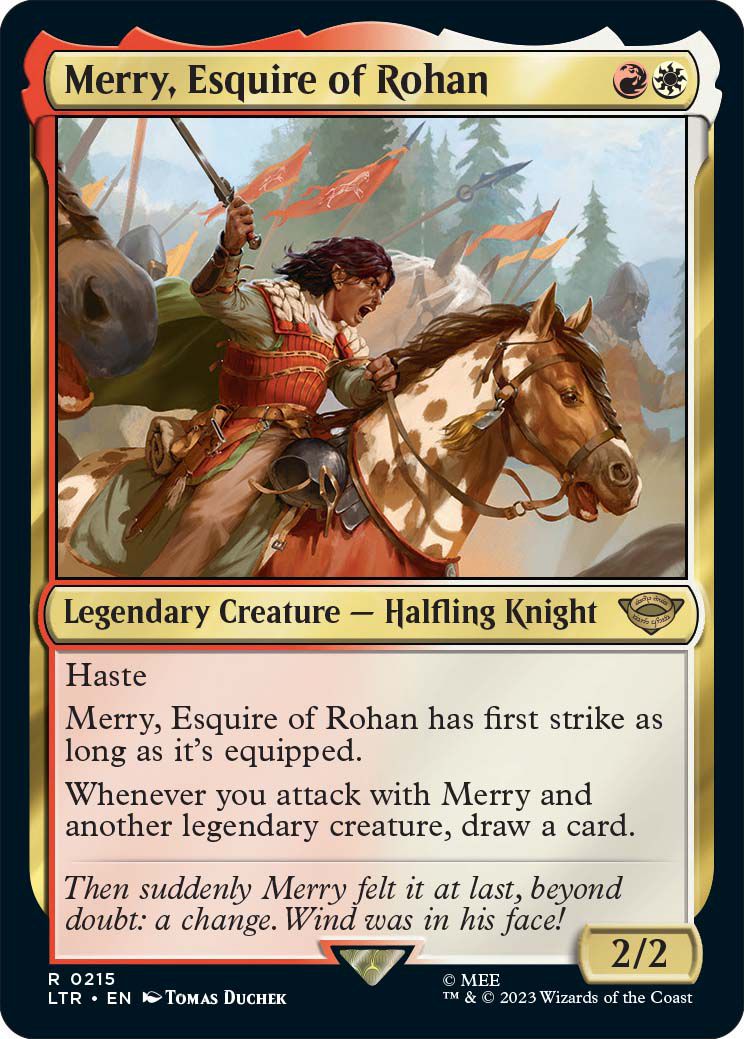
“My main thing was, ‘If you’re gonna do representation, it’s not gonna be in the background.’ Right? So that was how I approached it. […] People have been including themselves in Lord of the Rings for decades, so we’re joining that conversation. Lord of the Rings is about the peoples of Middle-earth coming together to fight evil. So we wanted to make that message of diversity even more relevant and make it match the values that we have.
“The fight [at the center of Tolkien’s novels] is not just about the fight, and that’s important in Lord of the Rings,” Cartagena continued. “The fight is about that village and that peaceful life. That’s the life you want. You don’t want to live fighting.
Tolkien’s Lord of the Rings is a series that’s less concerned with the heroics of war. Instead, the stories embrace an unrelenting belief in hope — no matter how bad the circumstances get. It’s a sentiment that Cartagena hopes to capture in this set.
“War is an inevitable tragedy in The Lord of the Rings and in the defense of the life that you want people to actually have. And that life includes many of us that look differently, and feel differently about ourselves and about the world. One of the great things that happens after peace is achieved in Lord of the Rings is many populations are brought together, and there is new communication between them. And there is a new age beginning. I wanted to translate that hope, and that’s why I wanted that hope to apply to everyone who’s going to play this game.”
Magic: The Gathering’s ambitious new set, The Lord of the Rings: Tales of Middle-earth, arrives for Magic: The Gathering Arena on June 20, with a physical release on June 23. Pre-release begins on June 16 at friendly local game stores worldwide. An additional release is set for Nov. 3.

